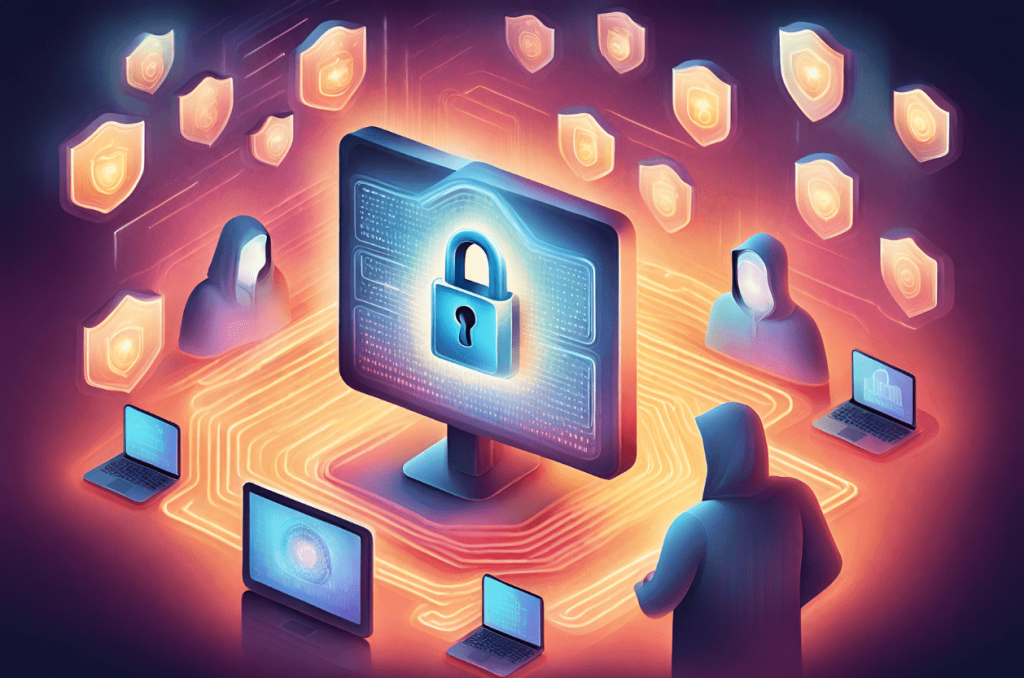Protecting your digital space from malware requires proactive strategies like regular software updates, strong passwords, and reliable antivirus protection. Safe browsing, avoiding suspicious links, and enabling multi-factor authentication further strengthen security. Staying informed about emerging threats helps prevent cyberattacks and ensures a safer online experience.
Introduction to Malware Threats
Malware threats have become ubiquitous and increasingly complex in our rapidly advancing digital age. Malware, a term encompassing a wide array of malicious software designed to disrupt, damage, or illegally obtain private information, penetrates systems through many avenues. The relentless innovation in malware design mirrors the growth of our technological capabilities. Cybercriminals see new opportunities to exploit every new device or software update. Hence, both individuals and organizations must establish defenses against these invisible threats. Gaining an in-depth understanding of the myriad nature of malware is necessary to cultivate a robust security strategy that can withstand these digital scourges.
Identifying Common Malware Types
Navigating the digital security landscape starts with identifying the various types of malware attempting to breach our defenses. Viruses, the oldest form of malware, infamously attach themselves to legitimate software, laying dormant until activated; at this point, they begin corrupting data and spreading across systems. Worms, conversely, possess the autonomous ability to replicate without human interaction, thriving on network vulnerabilities. Similarly, Trojans masquerade as harmless applications, tricking users into initiating the attack themselves. Ransomware, perhaps the most feared of all, encrypts victim data, requesting a ransom for decryption. Meanwhile, spyware silently gathers sensitive information, compromising user privacy. Understanding these threats is more than academic; it’s essential to defend against potential digital existential threats proactively.
The Human Factor: How User Behavior Invites Threats
Against digital defenses, human behavior often emerges as the weakest link. While technology buffs focus on tech resilience, users are frequently seduced by sophisticated phishing scams that dupe even the most cautious among us. Phishing, a gateway to malware, cleverly disguises malicious content as credible communication, urging users to reveal confidential information or to download malware-laden attachments. With its psychological manipulation prowess, social engineering masterfully exploits inherent human trust, often leading to disastrous security breaches. It becomes apparent that addressing technological vulnerabilities without considering the human element offers only partial protection. Empowering users with knowledge and promoting a culture of vigilance and skepticism towards unfamiliar digital interactions are critical steps in fortifying the human firewall.
Implementing Multi-Layered Security Measures
A comprehensive defense against malware transcends singular strategies; it requires a harmonized deployment of multiple security measures, each reinforcing the next. This multi-layered approach commences with robust antivirus software and firewalls, serving as the first line of defense by detecting and neutralizing threats in real time. Intrusion detection systems elevate this safeguarding tier by continuously monitoring network traffic, flagging anomalies, and preventing breaches before they metastasize. This orchestrated suite of protective layers acts like a security team, each member with specialized skills, ensuring that even if one line of defense falters, others stand ready to intercept threats. This holistic protection strategy provides more than peace of mind; it significantly mitigates risk to valuable digital assets.
The Role of Regular Software Updates
The dynamic nature of cyber threats makes software updates a necessary inconvenience and a critical pillar of contemporary cybersecurity strategy. In a perpetual race against cybercriminals, software developers routinely release updates to patch vulnerabilities that could be potential attack entry points. Yet, despite the evident benefits, many users delay or ignore these updates entirely. Configuring systems for automatic updates mitigates this risk by ensuring the latest protections are always in place. Given the heightened stakes in digital security, more proactive guidance can be found through resources like Microsoft Support, which offers comprehensive support for managing and implementing crucial software updates effectively.
Educating End Users: A Crucial Defense Strategy
While technology provides the tools to defend against malware, the human element ultimately defines the strength of these defenses. As such, education rises to prominence in reducing organizational vulnerability. Comprehensive training that elucidates the anatomy of threats—from phishing emails to the necessity of password diversity—is imperative. Users who understand their role as the final defensive layer contribute to a reduced risk profile throughout the organization. Formal education programs should be supplemented with regular refreshers to inform users of the latest threat developments. Drawing on resources such as Cybersecurity Awareness Training can provide the framework necessary for effective user education, fostering an informed and vigilant workforce.
Real-World Malware Incidents and Lessons Learned
The saga of malware is relatively short yet replete with tales of significant incidents that have reshaped our understanding of cyber defense. Widely publicized attacks like WannaCry in 2017 demonstrated the devastating power of ransomware, where inadequate security measures led to chaos across numerous industries. The NotPetya attack followed suit, causing extensive damage and serving as a teachable moment regarding the necessity of robust data backup protocols and comprehensive cybersecurity planning. From these incidents, it is evident that remaining passive in defense strategies is no longer viable. The lessons extracted from such real-world experiences should guide the ongoing enhancement of security measures, ensuring that defenses continually evolve to meet emerging challenges.
Future Trends in Malware Protection
As we look to the future, the forefront of malware protection will unquestionably be marked by technological innovation. Machine learning and artificial intelligence (AI) play an increasingly essential role in cybersecurity by providing predictive analytics that foreshadows malware attacks. By analyzing large datasets, these technologies can provide strategic insights into potential vulnerabilities, fortifying defenses ahead of emerging threats. Embedded with adaptive learning, AI-driven security solutions promise a future where protection continuously evolves, matching, if not outpacing, the sophistication of cyber threats. Individuals and organizations embracing these cutting-edge tools will enhance their defensive posture and secure a robust, future-proofed security strategy.







